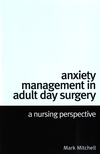 MetaGlossary promises meaningful results. Indeed, it does give the comprehensive definitions of everything. For example, searching for the term "glossary" can give you several comprehensive meanings, not just links.
MetaGlossary promises meaningful results. Indeed, it does give the comprehensive definitions of everything. For example, searching for the term "glossary" can give you several comprehensive meanings, not just links."Meta" means beyond, more comprehensive, or more highly organized, and with respect to other dictionaries and glossaries, MetaGlossary is all these things. MetaGlossary harvests definitions from the entire web, the world's largest, constantly-updated repository of information. Hence, it surpasses traditional dictionaries, which grow more out of date with each passing day. MetaGlossary is as dynamic as the web, offering the most current information out there on the most contemporary topics.
However, unlike other search engines, MetaGlossary is able to precisely extract the meanings of terms and phrases from the often frustratingly unmanageable mass of information on the web. It provides you with concise, direct explanations for terms and phrases, not just endless links to sift through in search of a comprehensive definition.What's more, MetaGlossary organizes these meanings based on topic and usage, so you'll find the one you're looking for quickly and easily. Since MetaGlossary spans the expanse of the web, even your most field-specific requests for terms, phrases, acronyms, technical jargon, and slang, will be successfully met.




